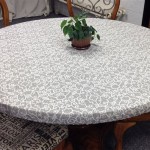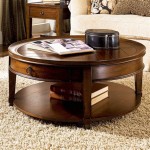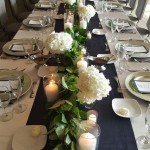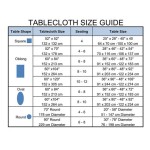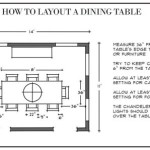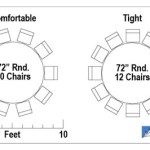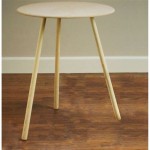Quilted Table Runner Patterns For Fall
Fall is a season often associated with warmth, comfort, and vibrant colors. These elements are often reflected in home décor, and quilted table runners provide an excellent opportunity to introduce a touch of autumn into any dining or gathering space. The versatility of quilted table runners allows for customization based on skill level, fabric choices, and desired aesthetic. This article will explore a range of quilted table runner patterns suitable for fall, providing guidance on techniques, fabric selection, and design considerations to enhance the overall appeal.
Exploring Common Fall-Themed Quilted Table Runner Patterns
Several popular patterns resonate strongly with the fall season. These patterns frequently incorporate traditional quilting techniques with color palettes and motifs that evoke the essence of autumn. Some recurring themes include leaf motifs, pumpkin designs, and geometric patterns rendered in warm, earthy tones.
Leaf-themed table runners are among the most recognizable and popular choices for fall. These patterns can range from simple, stylized leaf shapes to more intricate and realistic depictions. Techniques employed in creating leaf designs include appliqué, where fabric leaves are attached to a background fabric, and piecing, where smaller fabric pieces are sewn together to form the leaf shape. The choice of fabric greatly influences the overall look, with textured fabrics and variegated colors adding depth and visual interest. Templates for leaf shapes are widely available online and in quilting pattern books, allowing for easy replication or customization.
Pumpkin designs are another fall staple. These can also be achieved through appliqué or piecing methods. Simple pumpkin silhouettes are relatively easy to piece, even for beginner quilters. More complex designs might incorporate multiple fabric pieces to create a rounded shape with dimensional details. Fabric choices for pumpkins often involve varying shades of orange, from deep rust tones to lighter, more playful hues. Green fabric can be used for stems and vines, completing the pumpkin patch motif.
Geometric patterns, while not explicitly fall-themed, can be adapted to suit the season through careful color selection. Traditional quilt blocks such as the Log Cabin, Nine Patch, and Rail Fence can be rendered in warm fall colors like reds, oranges, browns, and golds to create a visually appealing and seasonally appropriate table runner. The simplicity of geometric patterns can also serve as a backdrop for more intricate quilting designs, adding further texture and depth.
Beyond these common themes, other fall-inspired designs include cornucopias, apples, acorns, and even images of fall foliage landscapes. The key to a successful fall-themed table runner lies in the thoughtful selection of fabrics and the skillful execution of quilting techniques.
Fabric Selection and Color Palette Considerations for Autumnal Quilts
The choice of fabric is crucial in creating a table runner that effectively captures the spirit of fall. The weight, texture, and color of the fabrics all contribute to the overall aesthetic. Considering the intended use of the table runner can also help guide fabric selection.
Cotton fabrics are a popular choice for quilting due to their durability, ease of handling, and wide availability. Quilting cottons come in an extensive range of colors and prints, making it easy to find fabrics that complement a fall color palette. Pre-cut fabric bundles, such as fat quarters and charm packs, can be particularly useful for creating a variety of colors and patterns within a single project. Flannel fabrics offer a softer, more textured option, adding a cozy feel to the table runner. Linen and linen blends can also provide a unique texture and drape, lending a more sophisticated look.
The color palette is perhaps the most defining aspect of a fall-themed table runner. Earthy tones like browns, oranges, reds, yellows, and greens are commonly associated with the season. However, the specific shades and combinations can be varied to achieve different effects. For example, a muted palette of creams, browns, and olives can create a rustic, farmhouse-inspired look, while a brighter palette of oranges, reds, and yellows can evoke the vibrancy of autumn foliage. Incorporating metallic accents, such as gold or copper threads, can add a touch of elegance and warmth.
Consider using fabrics with patterns that evoke fall, such as leaves, pumpkins, or plaids. These can be incorporated as focal points or used as background fabrics to add visual interest. Solid fabrics can also be used effectively to create contrast and highlight the geometric shapes or appliqued motifs.
Ultimately, the fabric choices should reflect the desired aesthetic and complement the chosen pattern. Experimenting with different textures and colors can lead to unique and visually appealing results.
Techniques and Construction Methods for Quilted Table Runners
Creating a quilted table runner involves a range of techniques, from basic piecing and appliqué to more advanced quilting methods. The choice of technique depends on the complexity of the pattern and the quilter's skill level. Careful planning and precise execution are essential for a successful project.
Piecing is the fundamental technique in quilting, involving sewing together fabric pieces to create a larger design. Accurate cutting and consistent seam allowances are crucial for ensuring that the pieced blocks fit together properly. A quarter-inch seam allowance is standard in quilting and is essential for maintaining the integrity of the design. Pressing seams open or to one side can also affect the overall appearance of the quilt. Pressing seams open reduces bulk, while pressing to one side can make it easier to nest seams together when joining blocks.
Appliqué involves attaching fabric shapes to a background fabric. This can be done by hand or by machine. Hand appliqué offers a more traditional and often more subtle look, while machine appliqué is faster and can create more defined edges. Various appliqué techniques exist, including needle-turn appliqué, raw-edge appliqué, and fusible appliqué. Needle-turn appliqué involves turning under the edges of the fabric shape before stitching it to the background fabric, creating a clean, finished edge. Raw-edge appliqué involves stitching the fabric shape to the background fabric without turning under the edges, leaving a raw edge that can be finished with a decorative stitch or allowed to fray slightly for a more rustic look. Fusible appliqué involves using a fusible adhesive to attach the fabric shape to the background fabric before stitching it in place.
Quilting is the process of stitching through all three layers of the quilt – the top (pieced or appliquéd), the batting (inner layer), and the backing. This can be done by hand or by machine. Hand quilting creates a delicate, textured look, while machine quilting is faster and can create more intricate designs. Various quilting patterns can be used, from simple straight lines to more complex free-motion designs. Choosing a quilting pattern that complements the overall design of the table runner is important. For example, straight-line quilting can create a modern, graphic look, while free-motion quilting can add a more organic and flowing feel. Using a walking foot on a sewing machine can help to evenly feed all three layers of the quilt through the machine, preventing puckering and distortion.
Once the quilting is complete, the edges of the table runner need to be finished. This can be done with binding, which is a strip of fabric that is sewn around the edges of the quilt to enclose the raw edges. Binding can be applied by hand or by machine. A double-fold binding provides a more durable and professional finish. Alternatively, the edges can be serged or zigzag stitched to prevent fraying, although this method is less common for quilted projects.
By mastering these techniques and carefully considering the construction methods, quilters can create beautiful and durable fall-themed table runners that will enhance any home décor.

Best 25 Fall Table Runner Ideas On Quilted Runners Patterns Pattern

Fall Charm Quilted Table Runner Joyous Home

Quilting Holiday Seasonal Patterns Autumn Shades Of Runner Quilt Pat Fall Table Runners Thanksgiving Quilted

Make This Fall Pumpkin Table Runner Tutorial The Cloth Parcel

Quilted Fall Table Runner Embroidery Weekly

This Would Be Lovely In A Variety Of Colors For Any Season Hmmm If I Planned The Color Scheme They Co Quilted Table Toppers Fall Runners

Easy Fall Quilted Table Runner Free Pattern Quilting

Autumn Stars Quilted Table Runner Pattern

Exclusively Annie S Quilt Designs Pumpkin Hollow Table Runner Pattern

Easy Quilt Patterns Scrappy Table Runner Pattern For Charm Packs Fall Beginner Quilting
Related Posts

